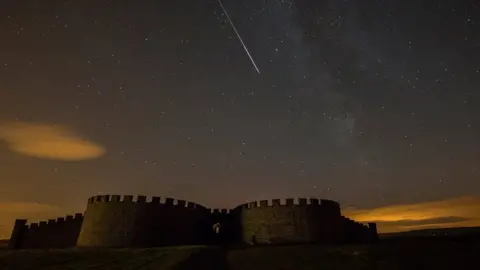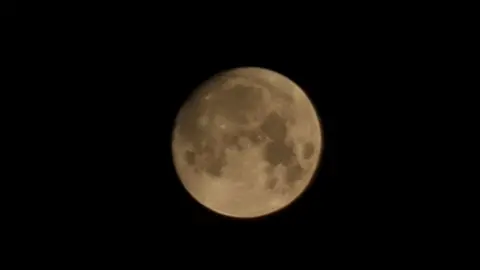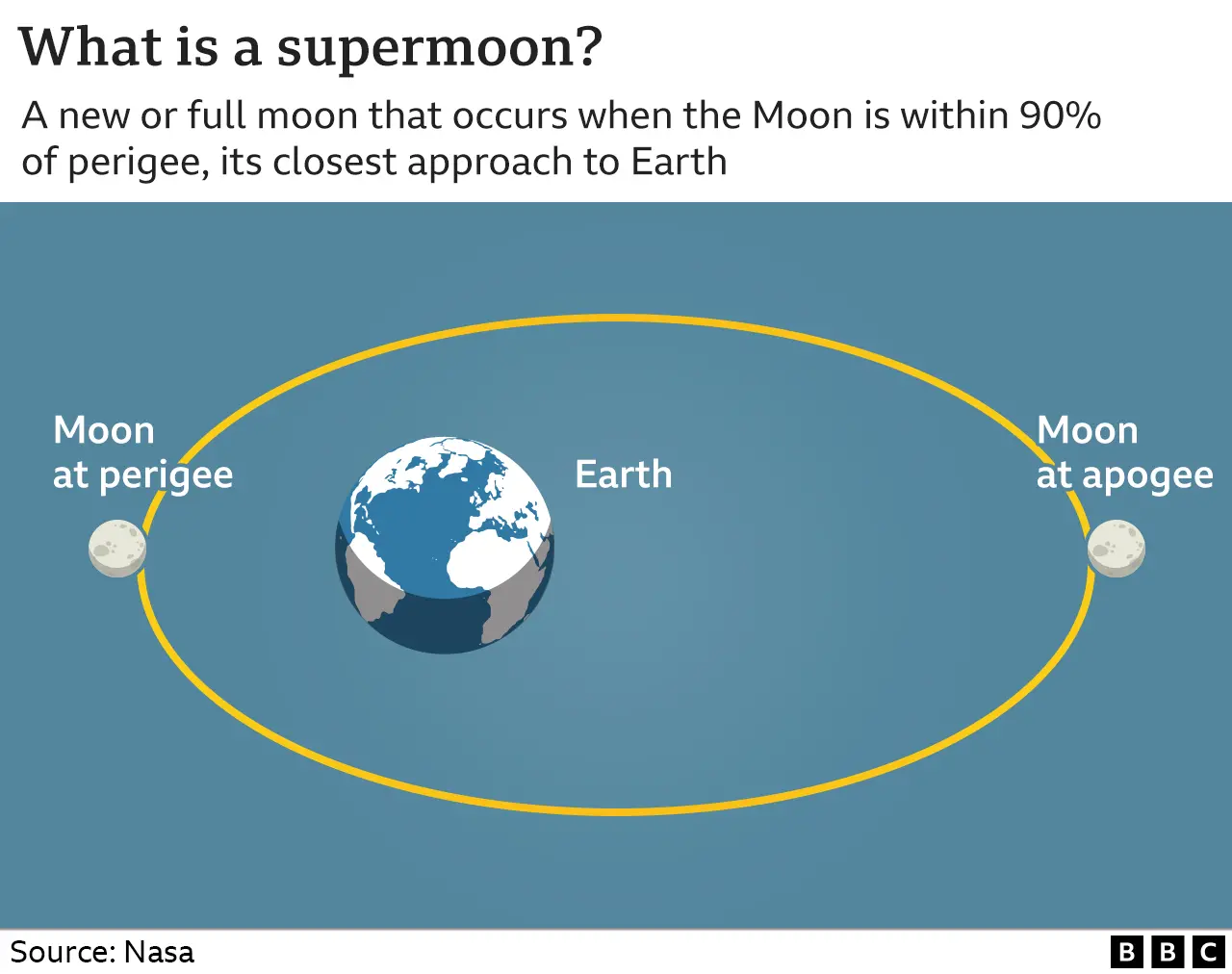Supermoon and Perseid meteor shower on display in NI skies
 Stephen McClean
Stephen McCleanStargazers will be treated to a celestial double spectacle over the next few nights with a supermoon and the Perseid meteor shower on show.
No special equipment is needed and viewing conditions will be almost perfect in Northern Ireland with clear night skies forecast.
Thursday will be the best night to see the supermoon, also known as the Sturgeon Moon, according to Astronomy Ireland.
It will rise at 21:34 BST.
Friday is expected to be just as good with the moon rising at 21:55 BST.
"This is the fourth and final supermoon of 2022," David Moore from Astronomy Ireland said.
"The next will be in July next year, although we don't know what the weather will be like then."
On top of that, the Perseid meteor shower will also be visible in the night sky, peaking on Friday night.
The display is the result of the earth passing through the debris from Comet Swift-Tuttle, with the particles burning up as they hit the earth's atmosphere.
 1000 Skies
1000 SkiesThey can be seen with the naked eye, but the brightness of the moon is likely to spoil the view a bit.
"Normally you'll see about 100 meteors an hour, roughly one every minute or so, but you're likely to see about half of that because of the moon," Mr Moore said.
"As soon as the sky is dark enough you'll see them, but the best time is always after midnight."
The best way to see the Perseids this year, is to look at the sky with the moon behind you and preferably behind a building, according to Terry Moseley from the Irish Astronomical Society.
"Look towards the north east and more so towards the east as the night wears on and the best time is in the hours just before dawn," he said.
If you are heading out, bear in mind that it takes 10 to 20 minutes for your eyes to adjust from light to darkness.
Get a good reclining chair and just gaze at the sky.

